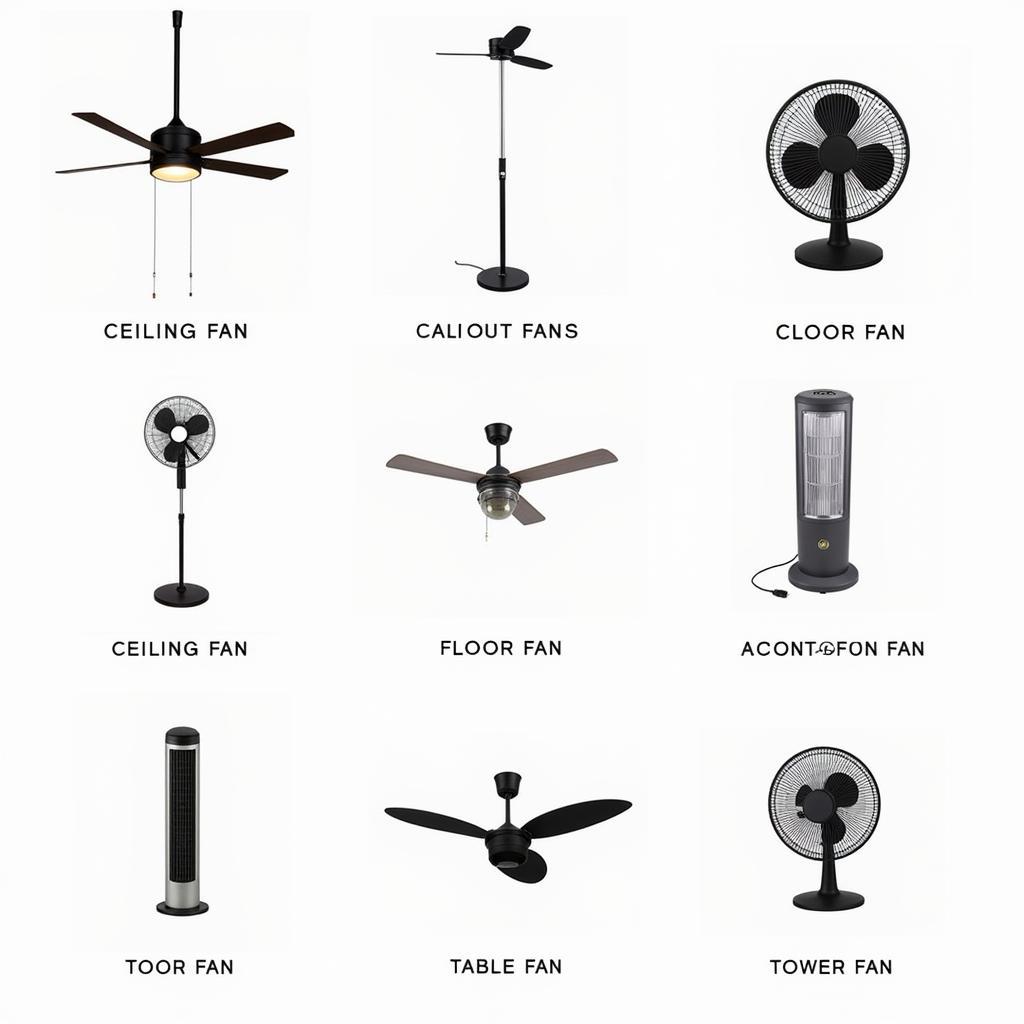Fan noise can be a surprisingly effective sleep aid for many people. Whether it’s the rhythmic whir of a ceiling fan, the gentle hum of a floor fan, or the white noise produced by a dedicated sound machine, fan noise can help mask disruptive sounds, create a soothing atmosphere, and promote relaxation for better sleep. This guide will explore the science behind using fan noise for sleep, the different types of fans available, and offer tips on choosing the right fan for your needs.
Is the constant hum of a fan your lullaby? You’re not alone. Millions find comfort and improved sleep with fan noise. But why does this work, and how can you optimize your sleep sanctuary with the perfect fan? Let’s dive in.
The Science of Sleep and Fan Noise
Why do some find the drone of a fan so comforting while others find it irritating? The key lies in how fan noise affects our auditory system. It creates a consistent, masking sound that blocks out disruptive noises like traffic, barking dogs, or noisy neighbors. This consistent sound is often referred to as “white noise,” which can help to smooth out the auditory environment and reduce the likelihood of sudden noises startling you awake. Additionally, the airflow from a fan can help regulate the temperature of your room, contributing to a more comfortable sleep environment. For many, this combination of auditory masking and temperature regulation leads to a more restful night’s sleep. You can even find specialized fans designed to minimize noise while maximizing airflow, offering the best of both worlds. Looking for a convenient way to keep cool in bed? Consider a clip on fan for bunk bed.
How Fan Noise Masks Disruptive Sounds
Our brains are constantly monitoring our environment for potential threats, even while we sleep. Sudden changes in noise can trigger our brain’s alert system, disrupting our sleep. Fan noise creates a constant ambient sound that helps mask these sudden changes, allowing us to sleep more soundly.
Choosing the Right Fan for Sleep
With a plethora of fans on the market, how do you choose the right one for your sleep needs? Consider the following factors:
- Noise Level: While some prefer a powerful, whooshing fan, others prefer a gentle hum. Look for fans with adjustable speed settings to customize the noise level. If noise is a major concern, consider a fan specifically designed for quiet operation or a remote control floor fan for easy adjustments without getting out of bed.
- Airflow: The amount of airflow you need will depend on the size of your room and your personal preferences. Larger rooms will require fans with higher CFM (cubic feet per minute) ratings.
- Features: Some fans come with additional features like timers, oscillation, and remote controls. These features can enhance your comfort and convenience. Need a powerful yet quiet fan? The honeywell fan circ might be a good option.
Types of Fans for Sleeping
- Ceiling Fans: These are a popular choice for their ability to circulate air throughout the room. They can be especially effective in warmer climates. However, if you’re concerned about babies in the room, refer to resources about babies and ceiling fans.
- Floor Fans: These are portable and can be easily moved from room to room. They are a good option for smaller spaces or for people who want more control over the direction of airflow.
- Table Fans: These are smaller and more compact than floor fans, making them ideal for bedside tables or desks.
- Tower Fans: These offer a sleek, modern design and can be a good option for those who want a powerful fan with a smaller footprint.
 Different Types of Fans Suitable for Sleeping
Different Types of Fans Suitable for Sleeping
Tips for Optimizing Fan Noise for Sleep
- Experiment with fan placement: Try positioning the fan in different locations to find the optimal airflow and noise level.
- Use a white noise app: If you don’t have a fan, or prefer a more customizable sound, try using a white noise app or machine. These can offer a wide range of sounds, including fan noise, rain, and ocean waves. Consider the benefits of a chế độ auto fan của điều hòa panasonic for automated comfort.
- Combine fan noise with other sleep aids: Using fan noise in conjunction with earplugs, blackout curtains, and a comfortable mattress can further enhance your sleep environment.
“Finding the right fan for sleep can significantly improve sleep quality. Experiment with different types and settings to discover what works best for you.” – Dr. Emily Carter, Sleep Specialist.
Conclusion
Fan noise can be a highly effective and affordable way to improve sleep quality. By understanding the science behind it and choosing the right fan for your needs, you can create a more peaceful and restful sleep environment. Don’t hesitate to experiment with different fan types, placements, and settings to find what works best for you and start enjoying better sleep tonight.
FAQ
- Is it bad to sleep with a fan on all night?
- Can fan noise damage your hearing?
- What are the alternatives to fan noise for sleep?
- How loud should a fan be for sleeping?
- Can a fan help with insomnia?
- Do fans improve air quality while sleeping?
- Are there any health risks associated with sleeping with a fan on?
For any assistance, please contact us at Phone: 0903426737, Email: fansbongda@gmail.com or visit our address: Lot 9, Area 6, Gieng Day Ward, Ha Long City, Gieng Day, Ha Long, Quang Ninh, Vietnam. We have a 24/7 customer service team.


